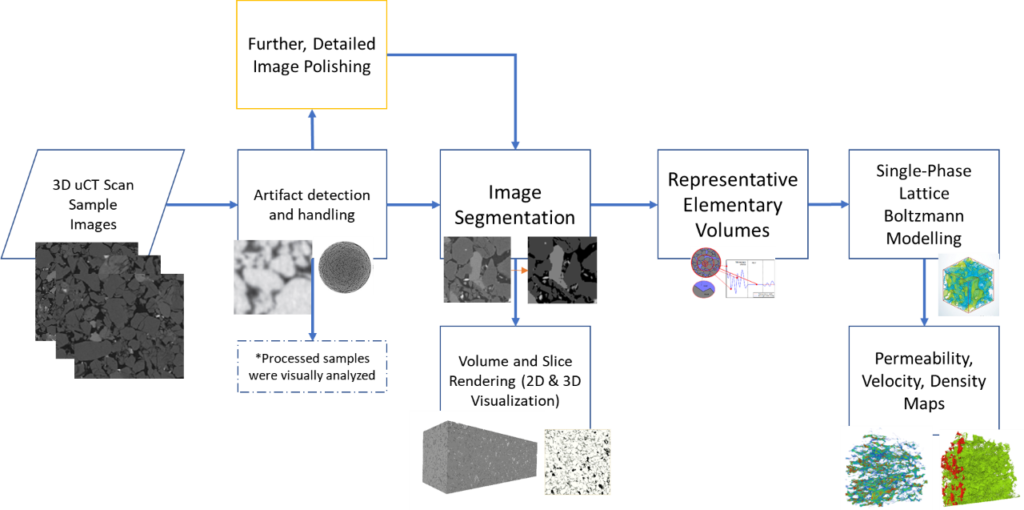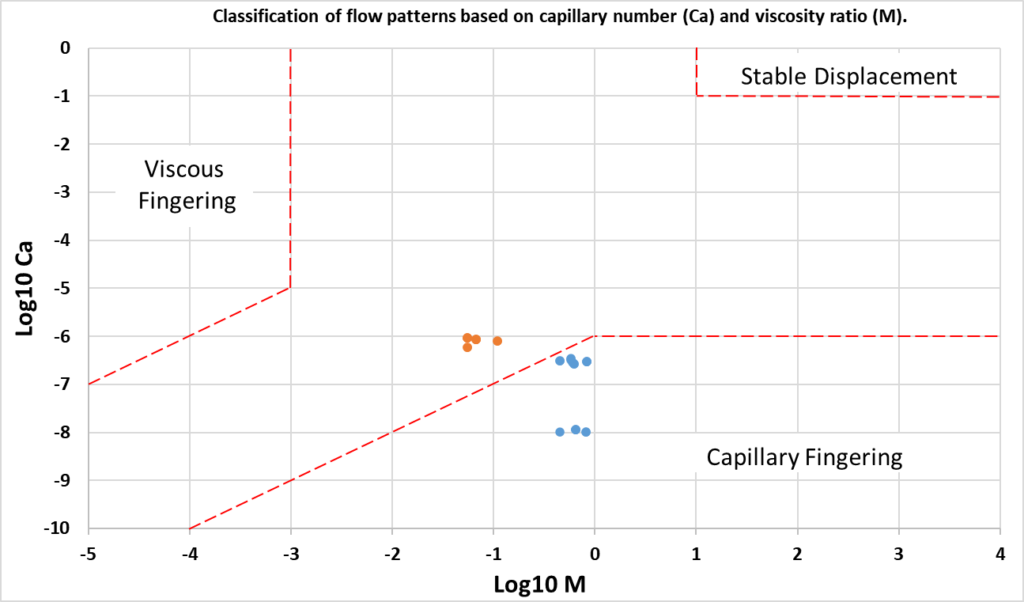Estimation of Pore Scale Efficiency using Integrated Lab Measurements and Numerical Techniques
Pore-scale displacement efficiency EPS also called displacement efficiency Ed, is a crucial parameter for the estimation of the ultimate oil recovery factor, accurate history matching, and production forecasting. In general, quantification of this parameter is complex since various phenomena such as wettability, pore geometry and topology, fluid properties, and capillary pressure have direct and indirect effects on it.
Multiphase fluid flow phenomena are quite complex and important in various natural and industrial processes, such as water infiltration into the soil, enhanced oil recovery, and CO2 sequestration. We will only consider immiscible displacements in the scope of this literature review. In general, fluid flow in porous media can be described as a function of capillary and viscous forces (ignoring gravitational forces).
Pore-scale displacement efficiency depends on several fluid, rock, and fluid-rock properties. Estimating EPS only from one standpoint would be a rough assumption. Currently, the main focus of the research community is on understanding how wettability, fluid viscosities, and displacement velocities influence residual oil saturation Sor, which is the most difficult parameter to predict in the EPS equation. Here, we will shortly discuss several experimental works addressing the abovementioned questions.
The objective of this study is to develop methodologies for accurate estimation of oil-water pore-scale displacement efficiency for the ACG field. Furthermore, to come up with a methodology of embedding 𝐸𝑃𝑆 from the newly developed approach into reservoir simulation models.
- The new database was created which is the integration of several data sources:
- Results of core-flooding experiments (various EPS’es., etc.)
- Other conditions of core-flooding experiments (state & type of the flooding, temperature, net overburden, etc.)
- Acquisition methods of 𝑆𝑤𝑖
- Mineralogical composition from XRD data
- MICP derived parameters
- Routine Core Analysis (RCAL) data

The complex nature of two-phase immiscible fluid flow in porous media mentioned in the literature review section shows how challenging it is to estimate residual oil saturation Sor and hence pore-scale displacement efficiency EPS. It was experimentally proven that ultimate Sor depends on the interplay of many parameters, such as wettability, viscosity ratio of fluids, the injection rate of displacing fluid, interfacial tension (e.g., water-oil), initial water saturation, and geometry and topology of porous media.

Hence, we build our methodology based on the involvement of the abovementioned parameters and we will observe that the estimation of 𝐸𝑃𝑆 only from one or two aspects does not give accurate results.
The importance of EPS and its effect on the ACG Bal VIII reservoir simulation model was estimated by quantifying the impact on cumulative production of the field as well as understanding the behavior of individual wells from oil-water production perspectives.


